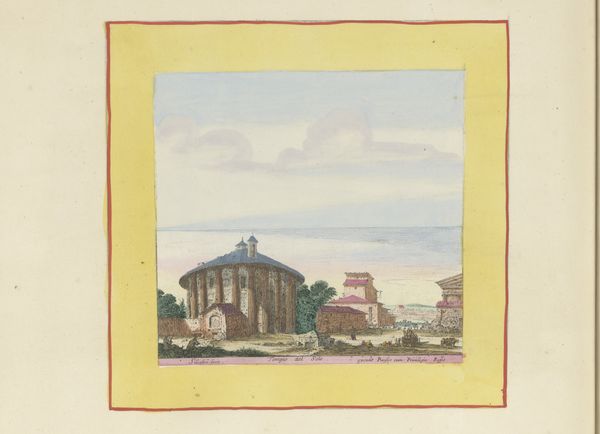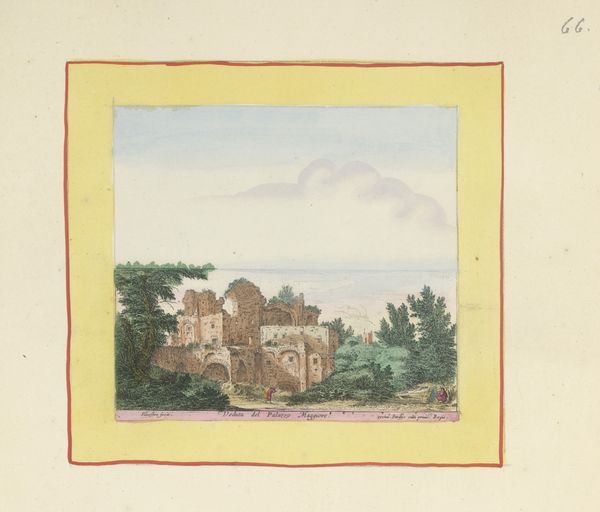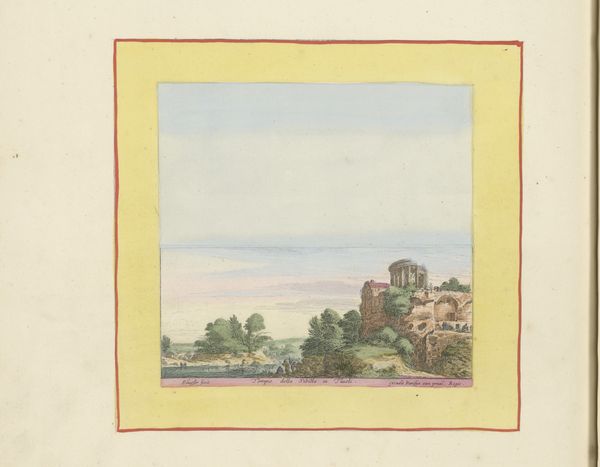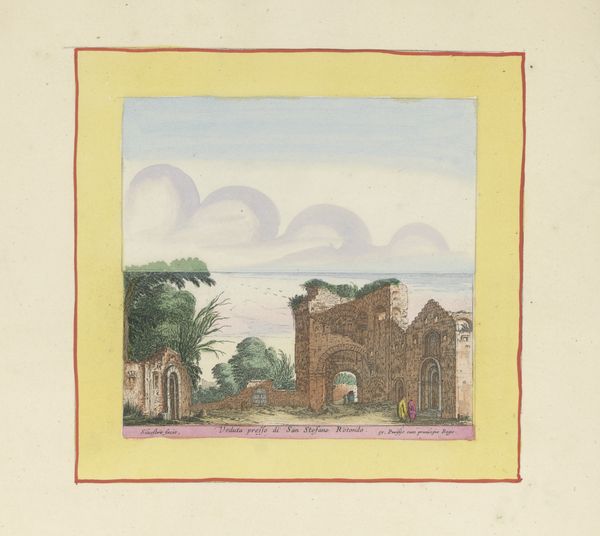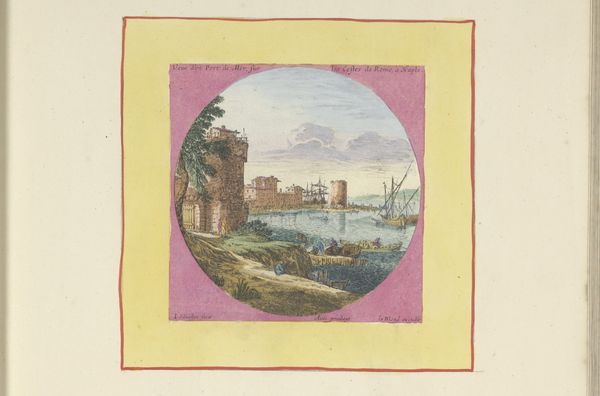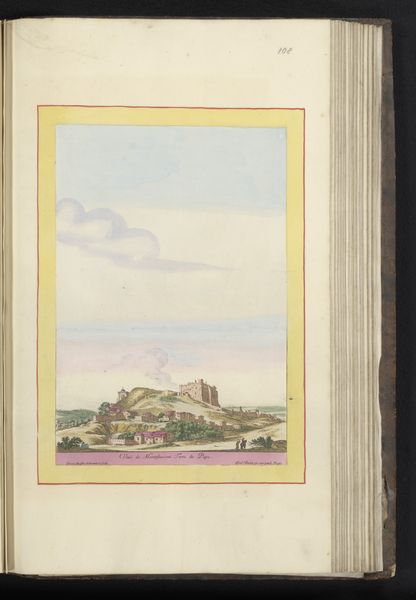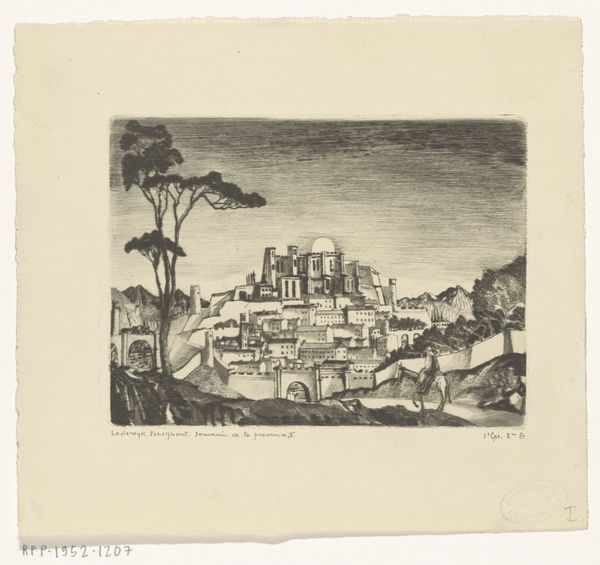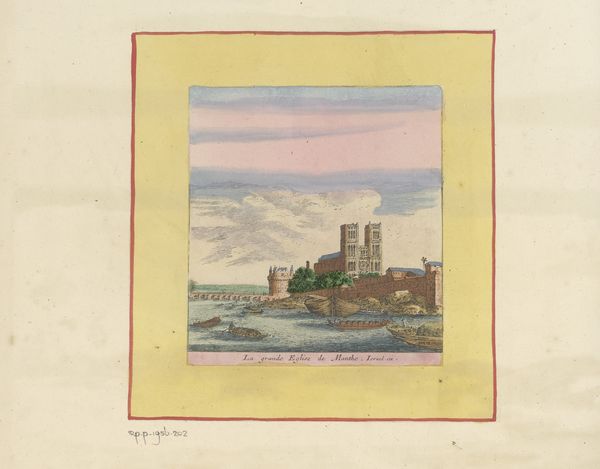
print, watercolor
#
water colours
# print
#
landscape
#
watercolor
#
watercolour illustration
#
italian-renaissance
#
watercolor
Dimensions: height 130 mm, width 153 mm
Copyright: Rijks Museum: Open Domain
Editor: Here we have "Ruïne aan de Via Flaminia" attributed to Israel Silvestre, dating sometime between 1631 and 1717. It appears to be a print using watercolor, depicting a ruin in a landscape. It strikes me as very delicate and illustrative, almost like something from a travelogue. What do you make of this piece? Curator: What grabs me immediately is the interplay between the supposed 'high art' subject - the Roman ruin - and the presumably mass-produced printmaking technique used to create it, accented by hand-applied washes. How does this affect our understanding of value, when architectural prowess is flattened and seemingly democratized through printing? What labor was involved, and by whom? Editor: That's interesting, I hadn't considered the implications of the printmaking process itself. Are you suggesting the medium challenges the status of the subject? Curator: Exactly. This image wasn’t necessarily conceived as "fine art" in the way a unique oil painting might have been. Prints allowed for dissemination. Who consumed these images? Were they intended for personal collections, travel documentation, or even architectural study? The paper itself, the inks and pigments available at the time - all point to a network of production and consumption beyond simply aesthetic appreciation. What was the market for images of ruins? Editor: So, it becomes more about the access and circulation of the image, the materiality of it, rather than just the image's artistic merit or the subject itself? Curator: Precisely! Thinking about the distribution and production makes us re-evaluate the hierarchies implicit in art history, opening avenues for considering labor, commerce, and the material world underpinning these supposedly timeless ruins. Editor: This has really changed my perspective on what to look for when analyzing a seemingly straightforward landscape print! It is no longer *just* the ruin depicted. Curator: Indeed, viewing art as a material product provides deeper insights into the society that created and consumed it.
Comments
No comments
Be the first to comment and join the conversation on the ultimate creative platform.
